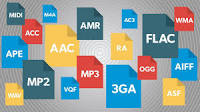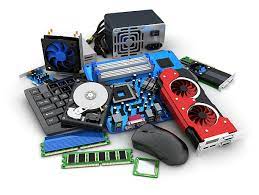Introduction
A network consists of two or more computers that are linked in order to share resources (such as printers and CD-ROMs), exchange files, or allow electronic communications. The computers on a network may be linked through Lan/Fiber optics cables, telephone lines, radio linked, satellites, Wi-Fi, Bluetooth, VPN or infrared light beams.
In summary, all networks must have the following:
- Something to share (data)
- A physical pathway (transmission media)
- Rules of communication (Protocol)
The goal of computer networking is to provide services and to reduce equipment costs. Networks enable computers to share their resource by offering services to other computers. Some of the primary reasons for networking PCs are as follows:
- Share files
- Share printers and other devices
- Enable common administration and security.
- Supporting network applications such as electronic mail and database service.
To have a network you typically have four things (besides the computers themselves):
- Network Interface Cards (NICs) – cards that plugs into the back (or side) of your computers and lets them send and receive messages from other computers
- Network Media – the medium to connect all of the computers together
- Hub/Switch – hardware to perform traffic control
- Protocol – a set of communication rules to make sure that everyone speaks the same language
How Does a Network Work?
How does one computer send information to another? It is actually rather simple. The diagram below shows a simple network:
If Computer A wants to send a file to Computer B, the following would take place:
Based on a protocol that both computers use, the NIC in Computer A translates the file (which consists of binary data — 1’s and 0’s) into pulses of electricity.

- The pulses of electricity pass through the cable with a minimum (hopefully) of resistance.
- The hub takes in the electric pulses and shoots them out to all of the other cables.
- Computer B’s NIC interprets the pulses and decides if the message is for it or not. In this case, it is, so, Computer B’s NIC translates the pulses back into the 1’s and 0’s that make up the file.
The pulses of electricity pass through the cable with a minimum (hopefully) of resistance.
The hub takes in the electric pulses and shoots them out to all of the other cables.
Computer B’s NIC interprets the pulses and decides if the message is for it or not. In this case, it is, so, Computer B’s NIC translates the pulses back into the 1’s and 0’s that make up the file.
Sounds easy, however, if anything untoward happen, along the way, you have a problem, not a network. So, if Computer A sends the message to the network using NetBEUI, a Microsoft protocol, but Computer B only understands the TCP/IP protocol, it will not understand the message, no matter how many times Computer A sends it. Computer B also won’t get the
Message if the cable is getting interference from the fluorescent lights . . . or if the network card has decided not to turn on today . . . etc. etc.
Objectives
- The connection to the Internet
- Networking math
Requirements for Internet Connection
- Connection to the Internet can be broken down into the following:
- Physical connection
- Used to transfer signals between PCs within the local network and to remote devices on the Internet
- Logical connection
- Uses standards called protocols. A protocol is a formal description of a set of rules and conventions that govern how devices on a network communicate.
- The application
- Interprets the data and displays the information in an understandable form
PC Basics
- Electronic components
- Connector, IC, LED, resistor, transistor
- Personal computer subsystems
- Bus, CD-ROM drive, CPU, disk drives, microprocessor, motherboard, RAM, ROM
- Back plane components
- Mouse port, network card, parallel port
All Computers Have a CPU, Memory, Storage, and Interface
Network Interface Cards
When you select a network card, consider the following three factors:
- Type of network
- Type of media
- Type of system bus
NIC and Modem Installation
- Connectivity to the Internet requires an adapter card, which may be a modem or NIC.
- Notebook computers may have a built-in interface or use a Personal Computer Memory Card International Association (PCMCIA) card. Desktop systems may use an internal or external NIC.
Modem
- A modem, or modulator-demodulator, is a device that provides the computer with connectivity to a telephone line
- A modem converts data from a digital signal to an analog signal that is compatible with a standard phone line
- The modem at the receiving end demodulates the signal, which converts it back to digital.
TCP/IP Description and Configuration
- Transmission Control Protocol/Internet Protocol (TCP/IP) is a set of protocols or rules developed to allow cooperating computers to share resources across a network.
- To enable TCP/IP on the workstation, it must be configured using the operating system tools.
- Ping is a program that is useful for reifying a successful TCP/IP installation.
- It works by sending multiple IP packets to a specified destination.
- Each packet sent is a request for a reply. Each reply contains the success ratio and round-trip time to the destination.



Comments are closed.